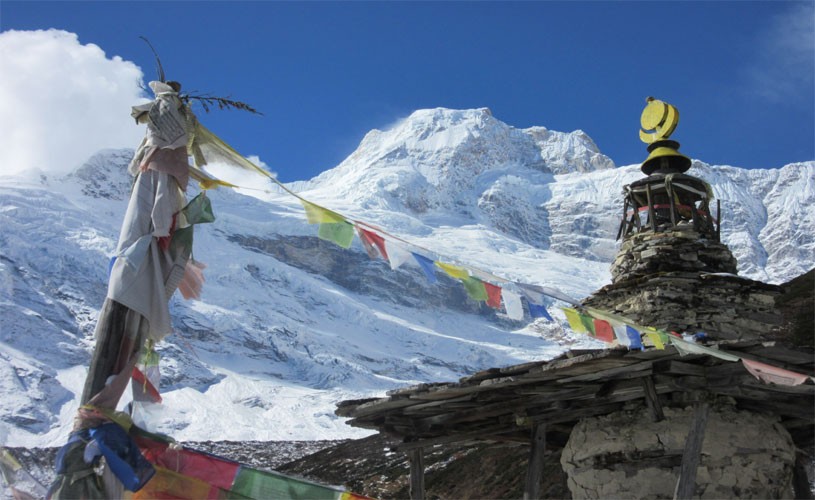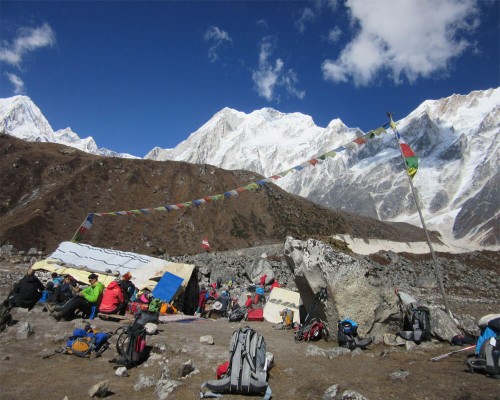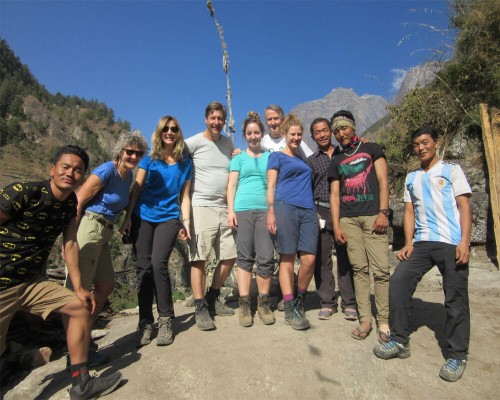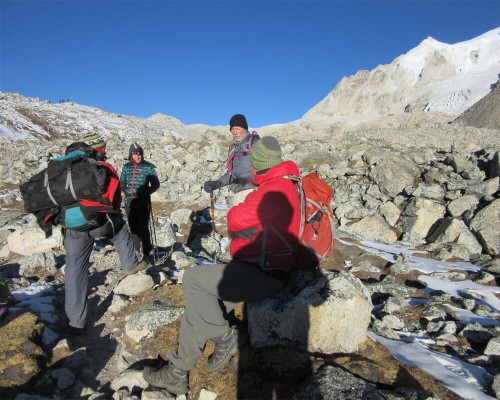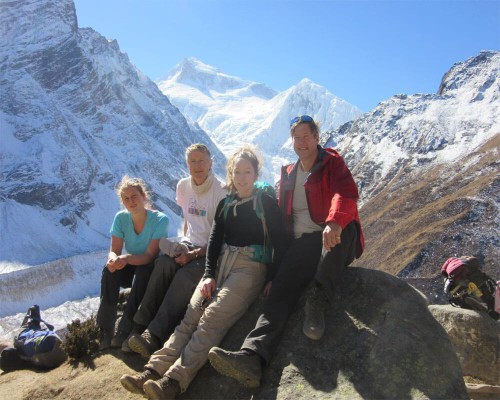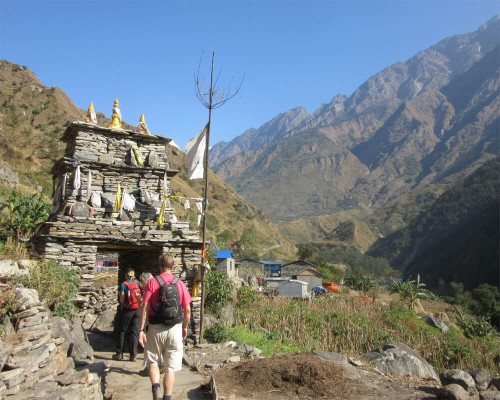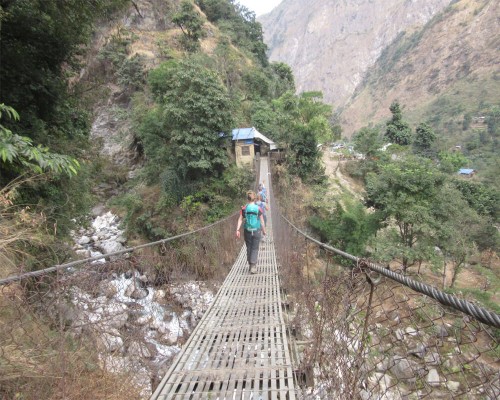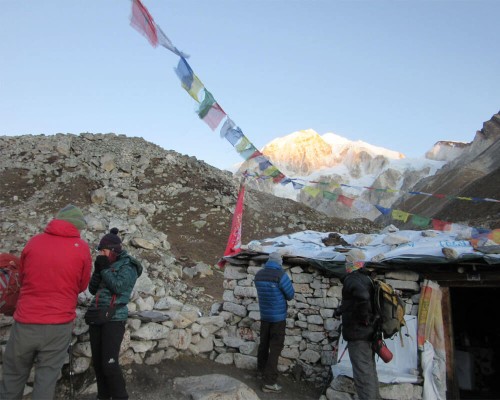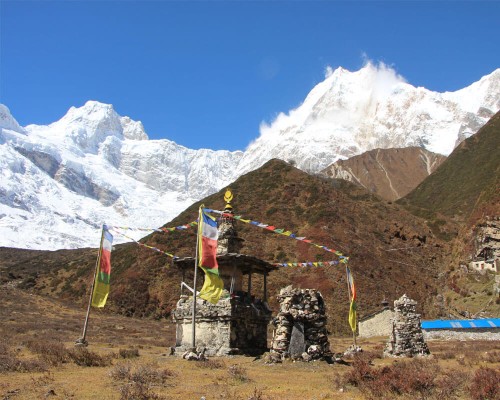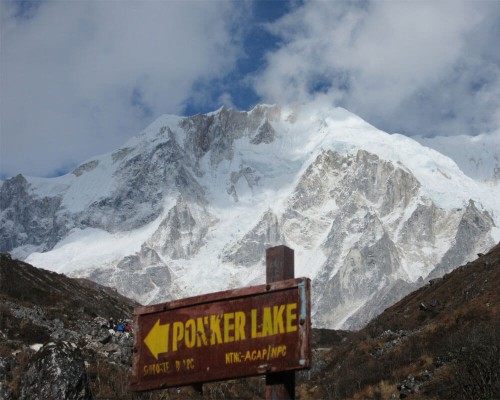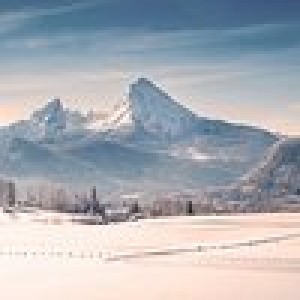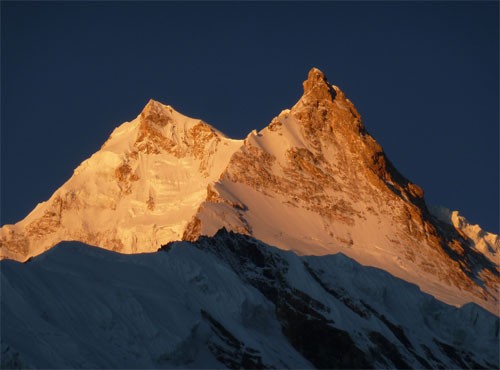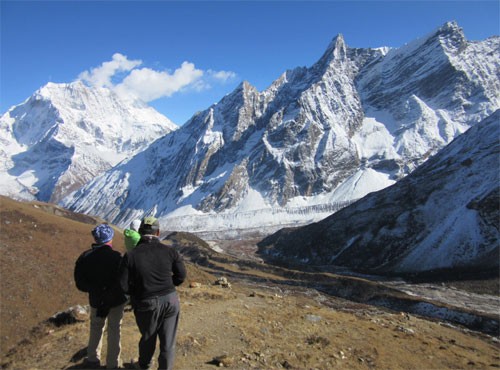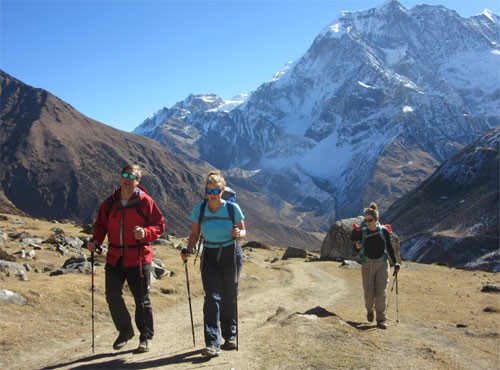Key Highlights of Manaslu Circuit Trek 14-Day:
- Cross the challenging Larkya La Pass.
- Explore ancient monasteries and rich cultural heritage.
- Admire stunning views of Mount Manaslu, the world’s eighth-highest peak.
- Interact with locals in remote villages.
- Experience the majestic Budhi Gandaki River valley.
- Observe unique flora and fauna along the trekking trails.
- Relax in natural hot springs after a day of hiking.
- Marvel at the breathtaking Pungyen Glacier.
- Enjoy panoramic views from Cheo Himal.
- Create unforgettable memories on this once-in-a-lifetime trek.
Manaslu Circuit Trek 14 Days - Itinerary, Price & Best Time 2026
The Manaslu Circuit Trek 14 Day is one of the most exciting remote trekking destinationsin Nepal, ideal for those seeking a real Himalayan adventure in the less crowded trails. If you’re looking for an off-the-beaten-path trek in Nepal, the Manaslu route is the perfect choice.
Unlike the crowded Everest and Annapurna trekking routes, the Manaslu Trek offers a quieter path through remote valleys, high mountain passes, and traditional Tibetan-influenced villages. This trek circles Mount Manaslu (8,163 m)—Nepal’s eighth-highest peak—delivering breathtaking views and authentic Himalayan culture along the way.
The Manaslu Circuit Trek begins from Kathmandu to Soti Khola or Machha Khola and slowly climbs through quiet mountain villages like Jagat, Deng, Namrung, and Shyala.
As you head north, you’ll walk through beautiful forests, cross hanging bridges, and pass stone walls with old Buddhist prayers carved on them. Each village offers a quiet glimpse of Himalayan life, with welcoming locals and beautiful mountain views.
As the journey continues upward, you’ll arrive in Lho, a traditional village crowned by a hillside monastery with the majestic Mount Manaslu rising in the background. The trail then takes you to Samagaun, one of the most scenic and ideal places to rest and acclimatize.
During your stay in Samagaun, you can take side hikes to beautiful spots like Birendra Lake, the serene Pungyen Monastery, and the peaceful Serang Gompa, Ngadi Chuli (7871m), Shringi Himal (7187m), Langpo (6965m), Saula (6235m), and of course Manaslu (8163m/26,781 ft), also known as Kutang.
For those who want to go higher, the hike to Manaslu Base Camp at 4,800 meters offers stunning mountain views. These side trips help with acclimatization and offer a deeper connection to the local culture and people.
Larke La Pass trek 5,151m is one of the most memorable parts of the trek and marks the highest point on the route. From the top, you can enjoy incredible views of Himlung Himal, Cheo Himal, Annapurna II, and other snow-covered peaks.
Trekking to the Manaslu is considered one of the best trekking destinations with moderate to challenging terrain and requires good physical fitness for long walking days and adjusting to high altitude, but with proper acclimatization and a steady pace, it’s suitable for physically fit trekkers.
If your schedule allows, adding a visit to Tsum Valley can enrich your trek. The valley’s peaceful trails lead to centuries-old monasteries, hidden meditation caves, and traditional villages that preserve Himalayan culture.
The Manaslu Circuit trek difficulty is moderate to challenging. It demands endurance for long trekking days and high altitudes, but with a reasonable pace and good preparation, it’s suitable for fit trekkers.
A guided Manaslu Circuit trek package is strongly recommended for 2025, not just for safety but because the region is a restricted area requiring a licensed guide and three permits: the Manaslu Restricted Area Permit (RAP), the Manaslu Conservation Area Permit (MCAP), and the Annapurna Conservation Area Permit (ACAP).
After Samagaun, the trail ascends through Samdo, a Tibetan border village, before an overnight at Dharmasala. Crossing Larkya La Pass (5,160 m) is the trek’s most challenging day, offering sweeping views of the Himalchuli, Cheo Himal, and surrounding glaciers.
After the pass, the trail drops into the alpine meadows and lush forests of Bhimtang—one of the most beautiful spots on the trek. From there, you pass Tilje and Dharapani, where the trail joins the Annapurna Circuit. Many trekkers end here and take a jeep or bus to Besisahar, then return to Kathmandu.
Join our expert-led 14-day Manaslu Circuit Trek and uncover one of Nepal’s last untouched Himalayan frontiers. Contact us now to customize your 2025 itinerary and secure your permits.
When is the best time to do the Manaslu circuit trek?
The pre-monsoon season, from March to May, and the post-monsoon season, from late September to December, are the optimum times to complete this Manaslu trek. The best months are often considered to be October, November, April, and May. September, December, and March are additional suggested months for this walk. The next months are not ideal for undertaking this walk. Crossing the Larkya La Pass in January and February is extremely dangerous because of the high snowfall. It is best to avoid June, July, and August because of the risk of flooding and landslides brought on by excessive rains.
How difficult is the 14-day Manaslu Circuit Trek?
The Manaslu Circuit Trek covers approximately 177 km/110 mi. On a 14-day itinerary, you'll walk for 10-11 days. This means that, on average, you'll cover 15-20 km (9-12 mi) daily. Each day. It is difficult to walk the first few days of the trail due to the steep Budi Gandaki Gorge and the uphill and downward walks. The Larkya La Pass is 5,106 m / 16,752 ft high. This trek is the most difficult, with long hikes on snow-covered trails. Altitude sickness is a major challenge you may face on this trek due to the wide variations in altitude. If you are not doing it in the winter, you do not need mountaineering or hanging skills. You must be physically fit and in good shape, even if it is your first time. Strength and endurance training and cardio fitness training are recommended to maintain fitness levels for at least three months before starting the trek.
What is the transportation to the Manaslu Circuit Trek like?
We will begin our journey by traveling 160 kilometers (99 miles) from Kathmandu to Maccha Khola via Soti Khola. By private jeep, it takes 7 hours, and by local jeep, it takes 8-9 hours. The entire first day of the trip consists of an off-road adventure ride. After the hike, you will take a Jeep for a six-hour drive from Dharapani before switching to another Jeep or local bus for a seven-hour trip to Kathmandu. Unlike other tour companies, please note that our company transfers you by private vehicle.
What is the accommodation on the Manaslu Circuit Trek like?
Accommodation on the Manaslu Trek includes clean huts and teahouses. Some places have upgraded guesthouses. The guesthouses have room heaters, en suite toilets and bathrooms, and a heated floor. The lodge owners add new facilities every year to improve the comfort of their guests. We will book the best lodges and guesthouses along the route for the duration of your trek when you book with Adventure Club Trek.
How are the meals during the Manaslu Circuit Trek?
Manaslu Trekking will serve all meals on a full-board basis, whereas in Kathmandu, only breakfast is served. Three meals are served daily during trekking from menus of tea houses, lodges, or local homes. We eat breakfast and dinner every day in the same location where we spend the night. Lunch will be served in a teahouse on the way to our destination. The Manaslu area has a different level of tourist infrastructure than exists in the Annapurna and Everest regions (and this is what makes this region so attractive). There will be no variety of food available. Tibetan bread, dal bhat, and tsampa are the main local foods. Adventure Club Trek recommends that we be prepared for a small adventure.
Is There Telephone and WiFi on the Manaslu Circuit Trek?
All of the teahouses where you will spend the night have electricity. Paying a little fee, you can use communal hydroelectricity or solar panels to recharge your phones, laptops, and other electronic devices. We strongly advise bringing backup rechargeable power banks or extra batteries. We do not recommend bringing your laptop because there is no free WiFi along the trekking trail, and the telephone service may be better. Although some teahouses charge for hourly WiFi access, don't anticipate high-speed internet on the inaccessible trails.
What is the drinking water like on the Manaslu Circular Trek?
Water available in taps, streams, or rivers is detrimental and unfit for drinking. Sadly, large fractions of the Nepalese population in rural and urban areas are deprived of safe and adequate drinking water. We recommend that our travelers drink boiled or purified water by adding purification agents. Although we discourage bottled mineral water, if you have to use it, double-check that the seal is intact and that the top of the bottle has yet to be manhandled. Overall, it is very important to drink adequate water while trekking in Nepal to avoid any threats associated with dehydration and altitude sickness. A liter of mineral water at lower-elevation tea houses costs around USD 1, but at higher elevations can cost up to $4, so the cost can add up.
Trekking Permits for the Manaslu Circuit Trek
The government of Nepal has decided to limit tourism in the Manaslu Region, which is the area between Jagat and Dharapani. This means that people who want to trek there alone can't do so. Instead, they need to get a special permit. Also, if you want to trek in this region, you have to be in a group of at least two people with a local guide. You can't just go with any guide; it has to be someone from a registered agency. You'll need three different permits for the Manaslu trek and an extra one if you plan to visit Tsum Valley as well.
Special Restricted Area Permit for Manaslu (Manaslu RAP)
The Cost of the Trekking permits
From September to November: USD 100 per person for the first seven nights and USD 15 extra per person each day after the eighth night.
From December to August: USD 75 per person for the initial seven days, and USD 10 extra per person each day after the eighth.
Manaslu Conservation Area Project (MCAP Permit)
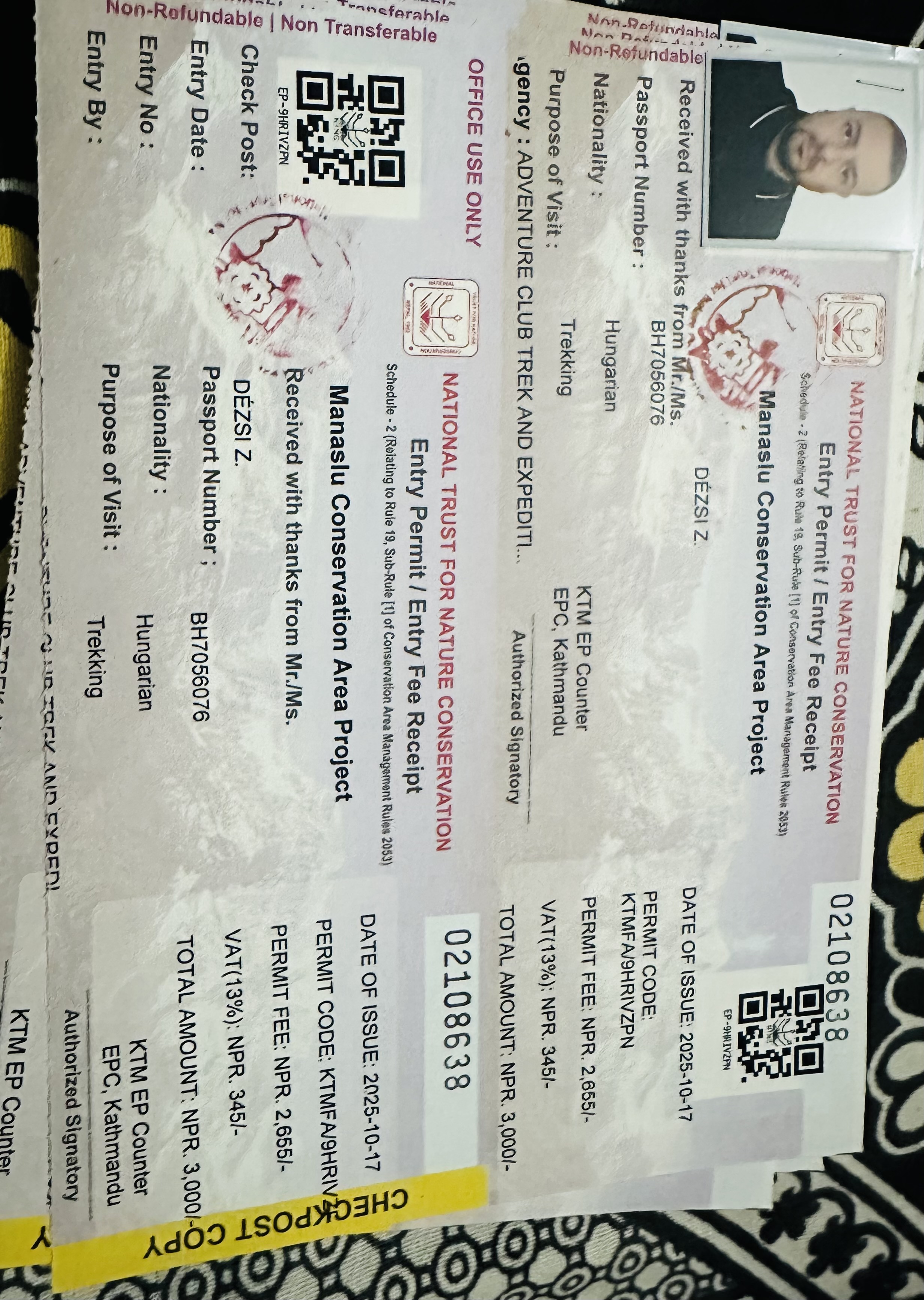
This permit is required from Philm, where the Manaslu Conservation Area starts. The price is USD 30 year-round for any days you spend inside the conservation area.
Annapurna Conservation Area Project (ACAP Permit)
You will need this permit from Dharapani to exit ACAP at Beshi Sahar. The cost of any day spent in the ACAP conservation zone is USD 30.

Experience Required for Manaslu Circuit Trek 14 Days
During the 14-day trek, you'll walk for about 10 to 11 days, covering an average distance of 15 to 20 kilometers (9 to 12 miles) daily. The Manaslu Circuit Trek is 177 kilometers (110 miles) long. The first few days of the trek can be challenging due to the steep Budi Gandaki Gorge and various uphill and downhill sections. The most difficult part of the journey is crossing the Larkya La Pass at an elevation of 5,106 meters (16,752 feet), which involves a full day of hiking on snowy and icy trails. Dealing with altitude sickness and adjusting to high elevations are significant challenges during the trek, as the terrain goes through significant height variations. Technical mountaineering or climbing skills are only required if you undertake the trek in cold weather. However, being in excellent physical condition is important, even if you are a beginner. Maintaining your fitness levels by doing strength, endurance, jogging, and running at least three months before the trek is recommended.



